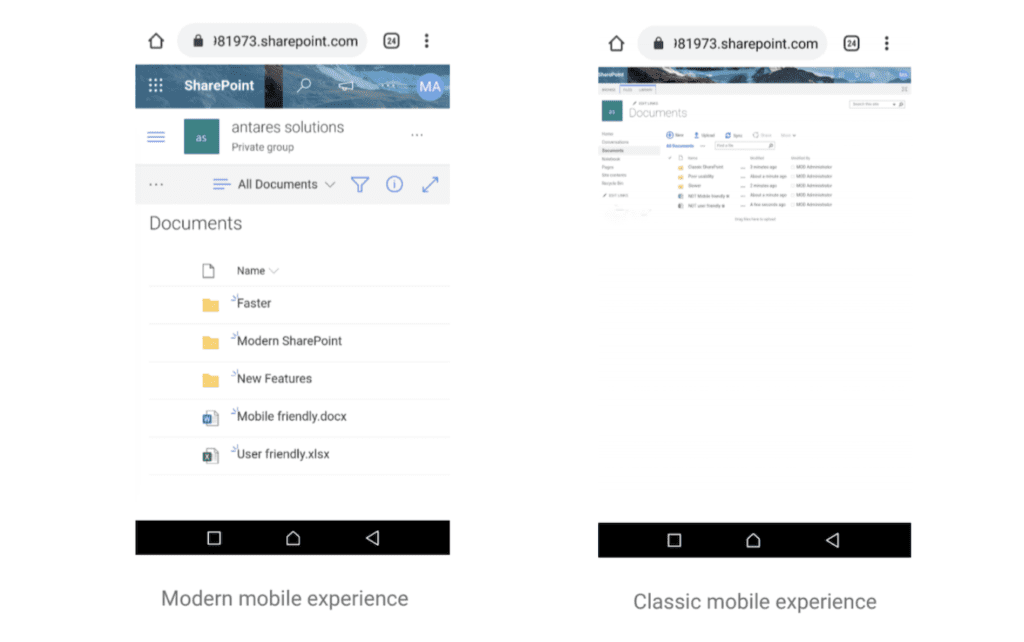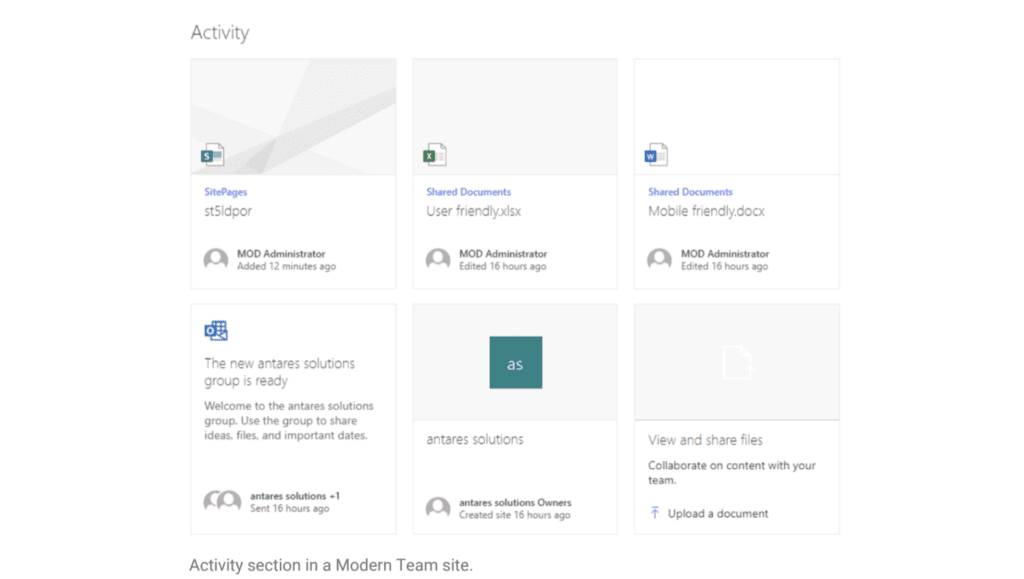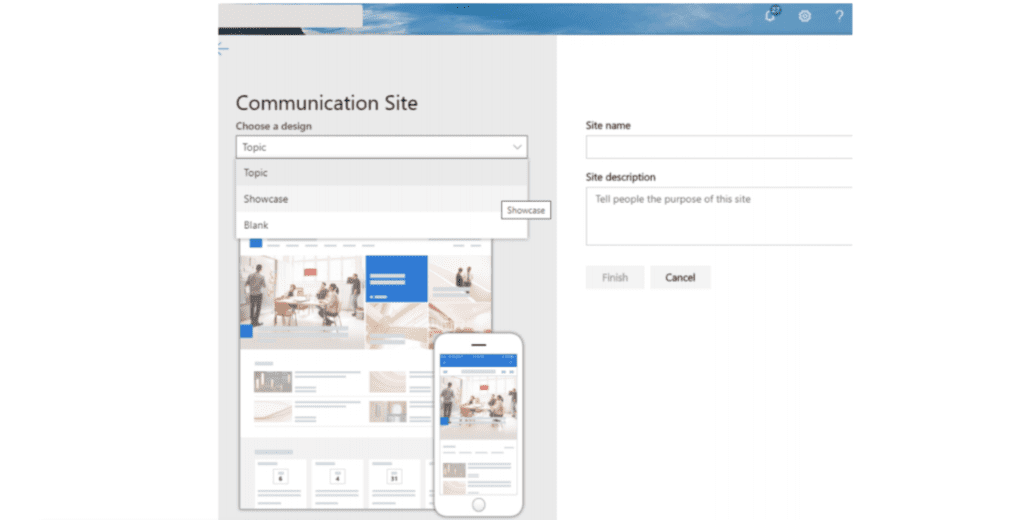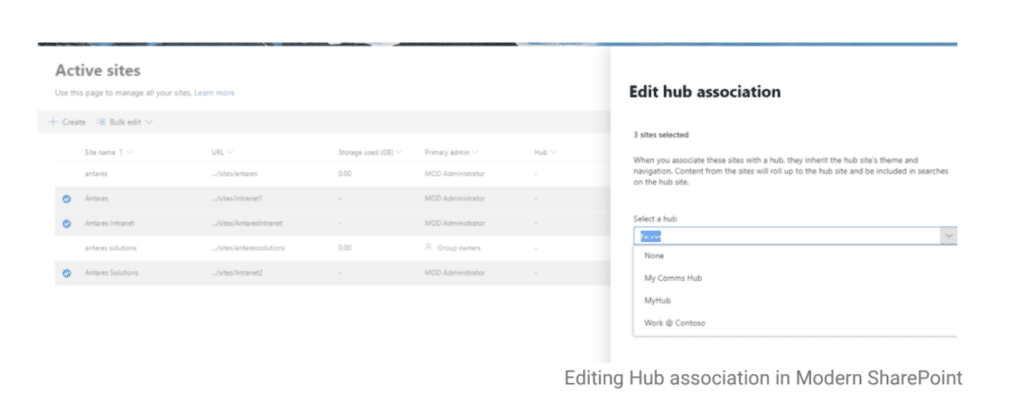
Industry Insights
Classic Vs. Modern SharePoint: What's the Difference?
Max McNamara
An experienced consultant in the Modern Workplace, Max focuses on helping our customers through their digital transformation journeys. As a leader at Antares, Max works with our internal teams and customers to deploy technology solutions to solve unique business problems. Max specialises in the Microsoft Modern Workplace and Applications technology stack that includes SharePoint, Teams, the Power Platform, O365, Bots & AI, Nintex, Promapp and the AvePoint suite. Max has worked across a wide range of industries with customers from 50 – 18,000 staff.
May 21st, 2020
Overview
Ensuring staff have access to the right tools and resources for collaboration not only from the office but anywhere and on any device is a must-have for the modern enterprise. The purpose of this detailed post is to compare Classic and Modern SharePoint and show you exactly why a migration to Modern SharePoint is a must for your organisation.
One of the most widely used collaboration platforms is SharePoint. SharePoint is a tool developed by Microsoft for the primary purpose of storing and sharing content. Using SharePoint, multiple users can centrally manage, access and collaborate on documents, tasks and related resources simultaneously. In terms of design, usability and function, there are two frameworks available in SharePoint today, namely, Classic SharePoint and Modern SharePoint.
Modern SharePoint is the newer platform, built for SharePoint Online as part of Office 365. Overall, it is faster, easier to use and has been optimised for mobility. Microsoft continues to invest heavily in the Modern experience, with all new SharePoint sites being Modern by default. In fact, more has been updated and if you are reading in 2024 or later, we recommend you jump over to this overview of Classic Vs. Modern SharePoint (2024).
The older Classic SharePoint experience is the legacy SharePoint framework that’s been the foundation of SharePoint for close to two decades. Microsoft no longer invests in the Classic experience. With Microsoft investing so heavily in Modern SharePoint (importantly the backend for Microsoft Teams), limited mobile support, end of life features and poor usability, Classic is now outdated. Organisations like your own must prioritise a migration to Modern SharePoint, otherwise you run the risk of being left behind.
Document lists and Libraries
In SharePoint, all content is stored in either lists or libraries. A SharePoint list consists of rows and columns for storing text and data in the form of a table, similar to Microsoft Excel. A SharePoint document library is like a list of files however, it is designed and optimised for storing and organising documents.
A SharePoint document library is like a list of files however, it is designed and optimised for storing and organising documents.
Classic Vs Modern Sharepoint
In 2016, Microsoft launched the Modern sites (and the Modern experience) for SharePoint lists and libraries. From the outset, you will notice that Modern lists and libraries have a sleeker, leaner look and feel. This makes them easier to navigate and use.

Mobile Experience
Due to the responsive design, Modern SharePoint lists and libraries automatically resize when viewed on a mobile device and the new SharePoint app supports lists and library views natively. This means you are no longer constantly zooming in and out, scrolling from side to side, or struggling to select tiny items on the screen.
The entire experience has been streamlined so that accessing SharePoint from your mobile is just as easy as it is on your desktop. With 67% of the world’s internet traffic now being generated by mobile devices – isn’t this enough reason to adopt Modern SharePoint?

Usability
In SharePoint Modern, common tasks such as copying and moving. items, grouping and filtering, can be accomplished seamlessly. For example, the Modern “Copy to” and “Move to” features allow you to quickly copy and move files and folders across multiple sites.
By enabling you to execute simple tasks rapidly, this is one way Modern SharePoint saves your staff time, increasing productivity.

Power Automate
Power Automate (previously knows as Flow) is a tool designed by Microsoft to automate business processes, or workflow, and is integrated into the SharePoint Modern experience by default. It is the Modern alternative to SharePoint workflows used in the Classic experience.
This Modern feature enables users to connect data sources, create powerful, automated workflows and seamlessly share them across teams quicker with far less developer work required. The ability for users without extensive web development skills to set up effective workflows quickly and easily, is one of the most compelling benefits of Modern SharePoint when compared to Classic.

Team Sites
SharePoint team sites are built to facilitate group collaboration. Using Team sites, members can easily share information, work on documents simultaneously from any device and stay up to date with company tasks, meetings and announcements.
Classic Vs Modern Sharepoint
The major difference between Classic and Modern SharePoint Team sites is that Modern sites are integrated with Office 365 Groups (and the associated features of O365 Groups). This integration enables users to set up calendar lists, task lists, announcements and more. It is also important to note that creating, navigating and using a Modern team site is faster and more responsive than a Classic Team site.

Office 365 Groups Integration
Office 365 Groups allows your internal teams to effectively collaborate by providing a collection of resources including a group email and a shared workspace for files, conversations and calendars in one place.
With Office 365 Groups, you don’t have to spend time manually assigning permissions to specific staff for individual resources; simply adding members grants them the necessary permissions they need. Office 365 Groups are the modern, superior replacement for traditional distribution lists and shared mailboxes.
Home Page
The Modern Team site homepage features news, quick links, and site activity capabilities. It also automatically displays recent activity on the site, such as files uploaded, changes made, lists and libraries created, etc.
As with many features of Modern Team sites, the new homepage markedly improves the UI and overall UX of teams.

News
Using the News feature, you can quickly create and share posts of all kinds – from announcements to status updates and beyond all with compelling graphics to complement them.
The News feature in a Modern Team site is functionally richer and provides a more dynamic experience compared to what is available in a Classic Team site. Additionally, with the new Audience Targeting tool, you can match the most relevant news and information to the right audiences with ease.

Branding
A compelling benefit of Modern Team sites when compared to Classic is the flexibility to tailor the UI and experience of Team sites to suit your organisation.
Unlike Classic Team sites where even small changes require extensive coding and custom configuration, you can easily personalise the site experience, including the logo, colours, and navigation without customisation.
For example, with the click of a button you can change the theme and colours of your SharePoint site so that they reflect your organisation’s brand guidelines.

In-line Editing
Imagine having to redirect to another page to complete a simple task such as renaming an item. This is what traditionally happens in the Classic experience. With in-line editing using the Modern experience, you can easily make changes and see updates in real time without being redirected to another page. This not only saves time, but provides editors with a user friendly, self-explanatory interface to manage pages.
Communication Sites And Publishing Sites
Both SharePoint Communication sites and Publishing sites are used to convey important information to people within your organisation at scale. While you can share company-wide news, reports and status updates with your staff using either of the two sites, a Communication site allows you to do so leveraging rich visuals and engagement web parts.
Classic Vs Modern Sharepoint
A Modern Communication site comes with new, easy-to-use publishing tools that enable you to create mobile-ready, dynamic pages with minimal coding experience. While serving the same purpose, a traditional Classic Publishing site is not easily created nor maintained, usually requiring significant developer intervention, and is not mobile responsive. Publishing sites do not exist on the Modern platform, instead they are replaced by Communication sites.
In the long run, building and maintaining your organisation’s Intranet portal using Modern Communication sites not only cost you less from a time and resources perspective but also allows you to create a beautiful new intranet homepage, landing and content pages.

Design
You can choose from three site designs when creating a Modern Communication site. Each design has a different purpose and allows for a varying level of flexibility.
- Topic – for sharing news, events and other topics.
- Showcase – for sharing information using photos.
- Blank – for creating your own design.
Whichever design you choose, the design process is generally smooth and quick. There are also additional design tools for you to use, such as the modern authoring canvas. By contrast, customising components such as site functionality and navigation on a Classic Publishing site is difficult and requires a SharePoint developer because of substantial code edits including editing master pages and page layouts.
Overall, Publishing sites are more expensive to design, allow less flexibility and are more difficult to maintain to suit your organisation’s changing needs.

Mobile Ready
A Communication site, unlike a Publishing site, is mobile-ready out of the box. This responsive design ensures that your users will be able to access the latest company news, information and updates on the go, anywhere, anytime.
Search
Two types of search experience are available in SharePoint. Modern sites have the Microsoft Search experience, while Classic sites offers a legacy classic search experience.
When you perform a search in a Modern site using Microsoft Search, the results are personalised based on your preferences and recent activity. You will also see recommended search results as you type, based on your personal history, which make the process of finding the documents, resources and information cleaner and faster. The Classic search experience, whilst it is more customisable, is more limited in scope and lacks key features, such in-line search.
Hub Sites And Sites Collections
Both Hub Sites and Site Collections are a collection (group) of sites that are common. You can group your SharePoint sites based on department, location, project, etc. The sites within a Hub Site or a Site Collection can share common settings like navigation and branding. Users can also search for content across all connected sites.
Classic Vs Modern Sharepoint
In Classic SharePoint, a Site Collection consists of a top-level site (parent), and one or more related subsites (children) underneath it. In Modern SharePoint, whilst site collections and subsites are still supported, they are not recommended. Instead, in Modern SharePoint, it’s recommended each new site is a Site Collection, connected together through a Hub site.
A Hub site is essentially the Modern equivalent of a Classic Site Collection; the root site. It is easier and faster to manage related sites in a Modern Hub site due to the way sites are structured. Hub Sites also offer more control, flexibility and support other benefits available in Modern SharePoint.
Flexibility
Unlike a Classic Site Collection, a Modern Hub Site more easily adapts to organisational changes. Using a Hub Site, new and existing SharePoint sites can be associated and dissociated within two clicks. In comparison, a Classic Site Collection has a structure that is not able to be changed or adapted easily, and organisations have spent significant time and money reorganising and move sites.

Branding and Theme
When you associate sites with a Hub, they will automatically inherit the Hub site’s theme and navigation. No further configuration is required. Content from the associated sites will also flow upward to the Hub Site. Your users will benefit from a consistent user experience across all related sites using a Modern Hub Site instead of a Classic Site Collection. In order to achieve common branding in Classic Site Collections, you need to customise the Master Page. Customising Master Pages requires SharePoint developer expertise.
Pages and web parts
In SharePoint, all content is displayed through pages. Web parts are apps that are used for storing and displaying content. An example of a web part is a list view or document library view web part. Web parts can also be used to add custom functionality to SharePoint Pages.
Classic Vs Modern Sharepoint
Classic SharePoint sites come with Classic web parts and pages, including wiki pages and blog pages. As with all things in the Classic UI, these web parts and pages do not provide a seamless user experience and require customisation for many changes. Whereas Modern web parts and pages offer improved functionality, performance and appearance across all your devices with no developer support required.

Planner and Stream Extensions
Modern SharePoint sites integrate Microsoft Planner and Microsoft Stream. Planner is a tool available through Microsoft Office 365 that you can use to create, track and manage tasks. Microsoft Planner provides an alternative to the Classic SharePoint Task list.
Stream is the new video service in Office 365. You can use Stream to upload, share and stream videos on any modern device and from any location. In SharePoint Modern UI, you can easily view and share videos from your company’s Microsoft Stream portal.
Mobile Responsive
It is a known that mobile responsiveness allows for increased efficiency and productivity among employees. One of the greatest advantages of Modern SharePoint Pages and Web Parts is mobile responsiveness.
The Move to Modern
Microsoft is clear, the future is Modern. Classic is a new legacy platform that customers must move away from. However, it should be clear after looking at individual SharePoint features that the Modern platform is well superior to Classic. It is quicker, more efficient, easier to use, mobile responsive and as a result, increases the productivity and efficiency of your staff. If you are still using Classic SharePoint – it’s time for you to migrate to Modern.
How do I get there?
There is no simple upgrade option to move from Classic to Modern SharePoint. Whilst lists and libraries can be converted into Modern views, the underlying sites remain in the Classic experience. A full migration includes many considerations and thoughtful planning.
In order to successfully migrate from Classic to Modern, you need the help of a trusted team of experts. Antares is a Microsoft Solutions Partner with 10 years’ experience in SharePoint and has a reputation for developing successful SharePoint strategies and leading migrations. To find out more about how Antares can help your organisation to make a smooth transition from Classic to Modern SharePoint, get in touch with the team today by clicking on the link below.
For an Updated review of Classic vs Modern SharePoint read our lastest blog


